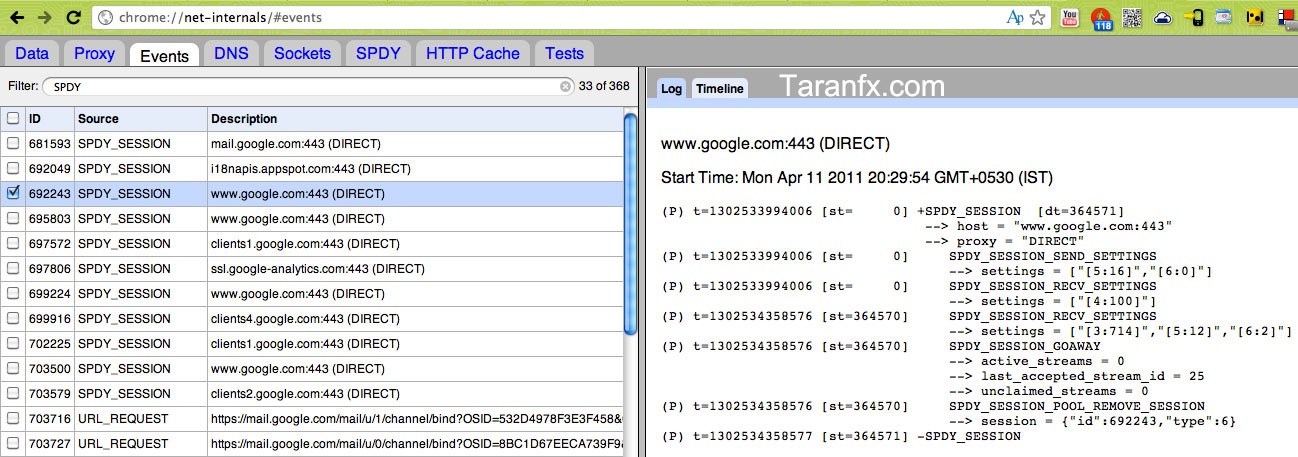 Google had started testing a new protocol for the web that would directly give a speed boost by 2x to the existing HTTP web infrastructure.
Google had started testing a new protocol for the web that would directly give a speed boost by 2x to the existing HTTP web infrastructure.
Google has, quietly, made the necessary upgrades to its webpages to support the new SPDY protocol reducing the page load time of Chrome for pages on its own servers by a stunning 50%. In effect, Google sites should load much faster in Chrome than in any other web browser.
SPDY incorporates features like multiplexed streams, request prioritization and HTTP header compression. To demonstrate the productivity. To be more precise, it’s 64% faster made possible as SPDY allows many concurrent HTTP requests to run across one TCP session and to make SLL the standard transport protocol.
Most of the shortcomings of HTTP were identified back in 1995, but little has been done to improve speed. As a result of that, both TCP and HTTP have evolved into a bottleneck of data downloads. HTTP is especially criticized for latency issues since HTTP can only fetch one resource at a time and servers cannot communicate with a client without a client request – and even then it can only support six connections at a time in most browsers. Apart from that, HTTP also uses uncompressed and redundant request and response headers.
SPDY Speed Improvements in Chrome
SPDY supports unlimited connection streams, with provision to proritize certain SPDY requests over others and even allows blocking overloaded channels. It also supports header compression and allows the server to communicate with a client without a client request.
SPDY is not much different, it still uses HTTP methods, headers and “other semantics.”, still using TCP. The difference is in connection management and data transfer formats.
How to Benchmark SPDY Improvements
You can always see speed improvements by calculating pageloading times. But there’s another way to measure it navigate to chrome://net-internals in a Chrome and Click on “View live SPDY session” to see all SPDY connections.
Google would open source the complete implementation of SPDY, as soon as all looks baked.
In case you wish to test SPDY out, Download any Chrome browser (stable, beta, developer, canary, nightly build) and point it to any Google site, it should be significantly faster.
More on SPDY [official whitepaper]
We write latest and greatest in Tech Guides, Apple, iPhone, Tablets, Android, Open Source, Latest in Tech, subscribe to us@taranfx on Twitter OR on Facebook Fanpage:
loading...
loading...


This is very interesting! It’s useful to know that through the SPDY, and the improvements make Chrome go faster. This is handy for those impatient internet-obsessed people! (like myself!) Another thing that is great for internet-obsessed people is Web2Mobile technology. Check it out if you’re interested in software that can transform your website into a mobile site. Web2Mobile.co However, I am going to pass a long all of this info about Chrome to my co-workers, who will also find it interesting!
loading...
loading...
just testing comments
loading...
loading...